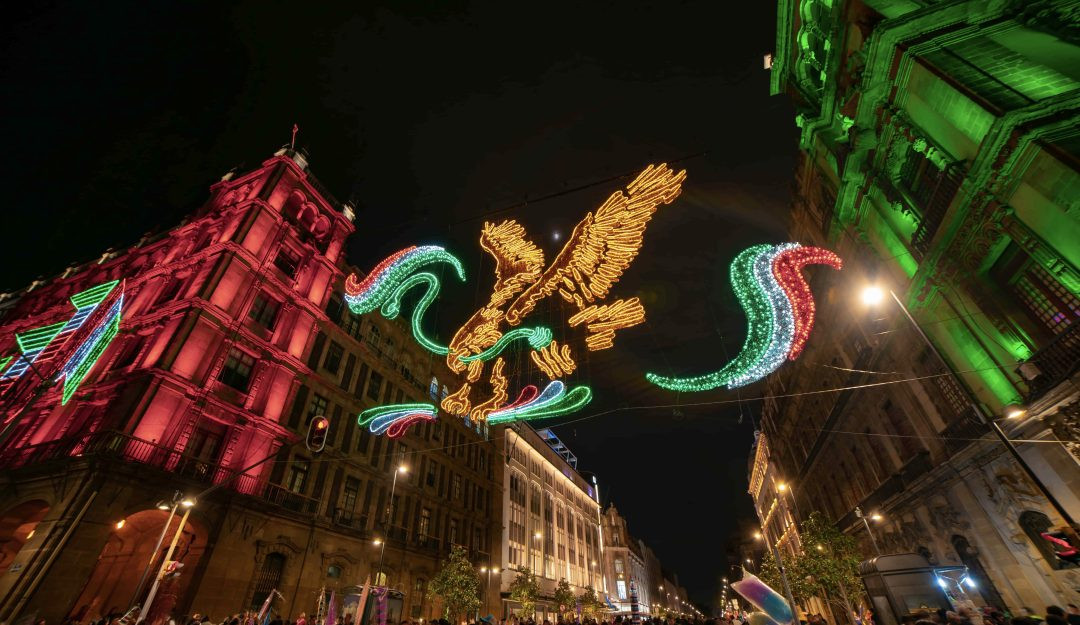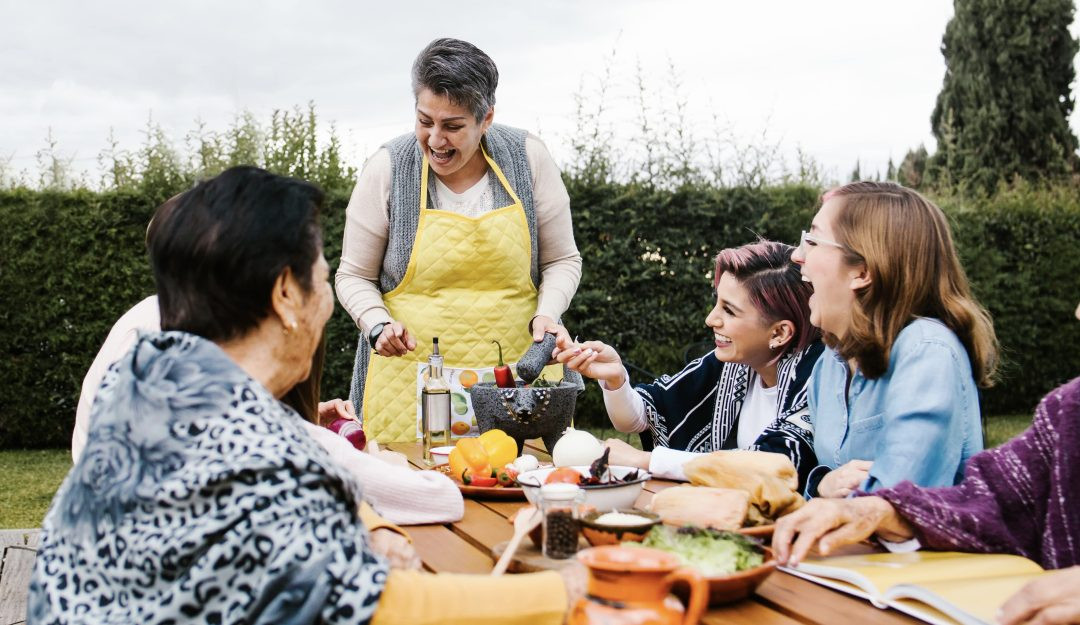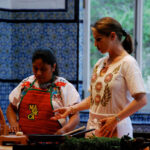Are you curious about how do Mexicans celebrate Independence Day? At gaymexico.net, we provide a comprehensive guide to Mexico’s vibrant Independence Day festivities, blending cultural richness with LGBTQ+ friendly insights. Discover the best places, events, and traditions that make this celebration unforgettable, tailored for the LGBTQ+ traveler and community. Learn about the “El Grito de Dolores,” traditional foods, and dances, ensuring an inclusive and memorable experience.
1. What is Mexican Independence Day and When Is It Celebrated?
Mexican Independence Day commemorates the country’s liberation from Spanish rule. It’s celebrated annually on September 16th, with festivities commencing the night before. This vibrant holiday is known as “Día de la Independencia” in Spanish.
The celebration, deeply rooted in Mexican heritage, begins on the evening of September 15th, culminating on September 16th. Preparations include buying food and drinks in advance for “El Grito,” a reenactment of the call to arms that sparks the celebrations in town squares. According to the Mexican government’s official calendar, September 16th is a national holiday, with banks and government offices closed. The entire month of September, known as “el Mes de la Patria,” is dedicated to honoring Mexico’s autonomy with various national celebrations and patriotic displays.
2. What is “El Grito de Dolores” and How is it Celebrated?
“El Grito de Dolores” is the historical “Cry of Dolores,” marking the start of the Mexican War of Independence in 1810. Today, it’s celebrated with a reenactment led by government officials in every city.
This tradition commemorates Father Miguel Hidalgo’s call to arms in Dolores, Guanajuato, on September 16, 1810. The reenactment occurs on the night of September 15th in cities across Mexico. The President of Mexico, or a local government official, appears with the flag and recites a series of exclamatory phrases, remembering those who fought for independence, ending with “¡Viva México!” This is followed by the ringing of a bell and the singing of the National Anthem.
3. What Traditional Activities Take Place During Mexican Independence Day?
Mexican Independence Day is marked by a range of vibrant activities, reflecting the country’s rich culture and patriotic spirit. Expect parades, fireworks, traditional music, and dance performances.
These activities often include:
- Military Parades: Displays of national pride and strength.
- Fireworks: Brightening the sky with color and excitement.
- Folkloric Music and Dance: Showcasing Mexico’s diverse regional cultures.
- School Presentations: Performances by elementary school children that highlight Mexican history and traditions.
 lights-shaped-like-an-eagle-hanging-over-the-streets-of-mexico-city
lights-shaped-like-an-eagle-hanging-over-the-streets-of-mexico-city
Alt text: Eagle-shaped lights illuminate the streets of Mexico City during Independence Day, showcasing national pride.
4. What are Some Traditional Foods Eaten During Mexican Independence Day?
Traditional foods play a central role in Mexican Independence Day celebrations. “Chiles en nogada,” pozole, and tequila are staples of the holiday.
4.1. Chiles en Nogada
This dish features poblano peppers stuffed with a mixture of fruits and meats (picadillo), covered in a creamy walnut sauce (nogada), and garnished with pomegranate seeds and parsley. The colors of the dish—green (parsley), white (walnut sauce), and red (pomegranate seeds)—mirror the colors of the Mexican flag.
4.2. Pozole
A hearty soup made with hominy, meat (usually pork or chicken), and broth, typically garnished with shredded cabbage, onions, radishes, avocado, and lime. It is a communal dish, perfect for sharing with family and friends.
4.3. Tequila and Banderita
Tequila is Mexico’s national spirit, often enjoyed neat or in cocktails. A “banderita” (little flag) is a popular way to drink tequila during Independence Day, consisting of three shot glasses with lime juice (green), tequila (white), and sangrita (red), representing the colors of the Mexican flag.
Table: Traditional Foods for Mexican Independence Day
| Food | Description | Significance |
|---|---|---|
| Chiles en Nogada | Poblano pepper stuffed with picadillo, walnut sauce, pomegranate seeds, and parsley | Represents the colors of the Mexican flag |
| Pozole | Soup with hominy, meat, and garnishes such as cabbage, onions, radishes, avocado, and lime | A traditional, hearty soup for communal celebrations |
| Tequila | Mexico’s national spirit, often enjoyed neat, in cocktails, or as part of a “banderita” | Symbolizes Mexican pride and heritage |
| Banderita | Three shot glasses with lime juice, tequila, and sangrita, representing the colors of the Mexican flag | A patriotic way to enjoy tequila during the celebrations |
These dishes not only satisfy the appetite but also evoke a sense of national pride and unity during the Independence Day festivities.
5. What is the Difference Between Mexican Independence Day and Cinco de Mayo?
Many people confuse Mexican Independence Day with Cinco de Mayo. Mexican Independence Day celebrates Mexico’s independence from Spain, while Cinco de Mayo commemorates the Battle of Puebla.
5.1. Mexican Independence Day
Mexican Independence Day, celebrated on September 16th, marks the start of Mexico’s war of independence from Spain in 1810. It is one of the most significant national holidays in Mexico, characterized by patriotic displays, parades, and cultural events.
5.2. Cinco de Mayo
Cinco de Mayo, celebrated on May 5th, commemorates the Mexican army’s victory over French forces at the Battle of Puebla in 1862. While it is a significant date in Mexican history, it is not as widely celebrated in Mexico as Independence Day. Instead, Cinco de Mayo is more popular in the United States, where it has become a celebration of Mexican-American culture.
Table: Key Differences Between Mexican Independence Day and Cinco de Mayo
| Holiday | Date | Significance | Popularity |
|---|---|---|---|
| Mexican Independence Day | September 16 | Marks the start of Mexico’s war of independence from Spain | One of the most important national holidays in Mexico |
| Cinco de Mayo | May 5 | Commemorates the Mexican army’s victory over French forces at the Battle of Puebla | More popular in the United States as a celebration of Mexican-American culture |
6. What are Some Misconceptions About Mexican Independence Day?
One common misconception is that Mexican Independence Day and Cinco de Mayo are the same. Another is that the holiday is solely about drinking and partying, overlooking its historical significance.
6.1. Common Misconceptions
- Confusing Mexican Independence Day with Cinco de Mayo: As mentioned earlier, these are distinct holidays with different historical backgrounds.
- Overemphasizing the party aspect: While celebrations are a significant part of the holiday, the historical and cultural importance of Mexican Independence Day is often overlooked.
- Ignoring the regional variations: Celebrations vary across different regions of Mexico, each with its unique traditions and customs.
6.2. Addressing Misconceptions
- Education: Providing accurate information about the historical context and significance of Mexican Independence Day helps dispel misunderstandings.
- Cultural Sensitivity: Highlighting the cultural and regional variations in celebrations promotes a deeper understanding of Mexican traditions.
- Balanced Representation: Showcasing the diverse aspects of the holiday, including both the festive celebrations and the solemn commemorations, provides a more comprehensive picture.
By addressing these misconceptions, we can foster a greater appreciation for the true meaning and cultural richness of Mexican Independence Day.
7. How Can LGBTQ+ Travelers Celebrate Mexican Independence Day Safely and Respectfully?
LGBTQ+ travelers can celebrate Mexican Independence Day safely and respectfully by researching LGBTQ+ friendly venues, being aware of local customs, and engaging with the community.
7.1. Tips for Safe and Respectful Celebration
- Research LGBTQ+ Friendly Venues: Identify bars, clubs, and events that are known for being inclusive and welcoming to the LGBTQ+ community.
- Be Aware of Local Customs: Familiarize yourself with local customs and traditions to show respect for the culture.
- Engage with the Community: Participate in community events and activities, and connect with local LGBTQ+ organizations to learn more about the local culture and community.
7.2. LGBTQ+ Friendly Destinations in Mexico
Some of the most popular LGBTQ+ friendly destinations in Mexico include:
- Puerto Vallarta: Known for its vibrant gay scene and welcoming atmosphere.
- Mexico City: Offers a diverse range of LGBTQ+ venues and cultural attractions.
- Cancun: Features several LGBTQ+ friendly resorts and beaches.
For more detailed information and resources, visit gaymexico.net, which provides comprehensive guides and insights for LGBTQ+ travelers in Mexico.
8. What Role Does Music and Dance Play in Mexican Independence Day Celebrations?
Music and dance are integral to Mexican Independence Day celebrations, showcasing the country’s diverse cultural heritage. Mariachi music and traditional folkloric dances are prominent features.
8.1. Mariachi Music
Mariachi music, with its lively rhythms and emotive vocals, is a staple of Mexican celebrations. Mariachi bands often perform at public events, restaurants, and private parties during Independence Day, filling the air with patriotic and festive tunes.
8.2. Folkloric Dances
Folkloric dances, representing the diverse regions of Mexico, are performed in colorful costumes. These dances often tell stories of Mexican history and culture, adding a rich layer of cultural expression to the celebrations.
Table: Examples of Traditional Music and Dance
| Music/Dance Style | Description | Regional Origin | Significance |
|---|---|---|---|
| Mariachi | Traditional Mexican music with violins, trumpets, guitar, and vocals | Jalisco, but now popular throughout Mexico | Symbol of Mexican identity and pride |
| Jarabe Tapatío | Also known as the “Mexican Hat Dance,” a courtship dance with colorful costumes | Jalisco | Represents Mexican culture and traditions |
| La Bamba | A lively dance from Veracruz often performed at weddings and celebrations | Veracruz | Celebrates joy and community spirit |
| Danza de los Viejitos | “Dance of the Old Men” from Michoacán, where dancers wear masks of old men and perform comical movements | Michoacán | Represents respect for elders and cultural heritage |
These musical and dance performances not only entertain but also serve as a powerful reminder of Mexico’s rich cultural heritage and national pride.
9. How Has Mexican Independence Day Evolved Over Time?
Mexican Independence Day has evolved from a somber commemoration of the war for independence to a vibrant celebration of national identity, with modern influences shaping contemporary festivities.
9.1. Historical Evolution
- Early Commemorations: Initially, Mexican Independence Day was a solemn occasion to remember the sacrifices made during the war for independence.
- Growth of National Identity: Over time, the holiday became a celebration of Mexican identity and culture, with increased emphasis on patriotic displays and cultural events.
- Modern Influences: Contemporary celebrations incorporate modern elements such as concerts, large-scale public events, and social media, while still maintaining traditional customs.
9.2. Contemporary Celebrations
- Government-Sponsored Events: The government organizes events such as “El Grito” reenactments, military parades, and cultural performances to promote national pride.
- Community Involvement: Local communities participate in celebrations through parades, festivals, and traditional food fairs, fostering a sense of unity.
- Media and Technology: Media coverage and social media platforms amplify the reach of the celebrations, allowing Mexicans both at home and abroad to participate and share their experiences.
By blending traditional elements with modern influences, Mexican Independence Day continues to evolve as a dynamic expression of national identity and cultural pride.
 mexican-family-gathered-around-the-dinner-table-making-fresh-guacamole
mexican-family-gathered-around-the-dinner-table-making-fresh-guacamole
Alt text: A Mexican family prepares guacamole together at their dinner table, embodying the spirit of togetherness during Independence Day.
10. What are Some Unique or Lesser-Known Traditions Associated with Mexican Independence Day?
Beyond the well-known traditions, several unique and lesser-known customs add depth to Mexican Independence Day celebrations, including regional variations in food, dress, and festivities.
10.1. Regional Variations
- Food: Different regions of Mexico have their own unique dishes associated with Independence Day. For example, in some areas, specific types of tamales or regional variations of pozole are served.
- Dress: Traditional clothing varies by region, with people often wearing indigenous or regional costumes to celebrate their local heritage.
- Festivities: Local communities may have unique parades, dances, or reenactments that are specific to their region.
10.2. Lesser-Known Customs
- Decorating Homes and Streets: In addition to public decorations, many families decorate their homes with patriotic colors, flags, and symbols of Mexican independence.
- Family Gatherings: Independence Day is a time for family reunions, with families coming together to share meals, celebrate, and honor their heritage.
- Religious Observances: Some communities incorporate religious observances into their Independence Day celebrations, attending special church services to give thanks for their nation’s freedom.
Table: Regional Variations and Unique Customs
| Region | Unique Dish | Traditional Dress | Unique Festivity |
|---|---|---|---|
| Oaxaca | Tlayudas (large, thin, crispy tortillas with various toppings) | Traditional Oaxacan clothing, often with intricate embroidery | Guelaguetza festival (a celebration of indigenous cultures) |
| Puebla | Mole Poblano (rich, complex sauce made with chili peppers and chocolate) | China Poblana dress (embroidered blouse and sequined skirt) | Reenactment of the Battle of Puebla |
| Yucatán | Cochinita Pibil (slow-roasted pork marinated in achiote paste) | Hipil (traditional white dress with colorful embroidery) | Vaquerías (traditional Yucatecan festivals with music and dance) |
| Veracruz | Pescado a la Veracruzana (fish cooked in tomato sauce with olives and capers) | Jarocho attire (white clothing with red scarves) | La Bamba dance performances |
Exploring these unique and lesser-known traditions provides a richer and more nuanced understanding of Mexican Independence Day celebrations.
For LGBTQ+ travelers and community members planning to experience Mexican Independence Day, gaymexico.net offers a wealth of resources, including:
- Comprehensive Guides: Detailed information on LGBTQ+ friendly destinations, events, and venues.
- Community Insights: Tips and advice from local LGBTQ+ residents and travelers.
- Safety Information: Resources to help ensure a safe and enjoyable experience.
Visit gaymexico.net to plan your perfect Mexican Independence Day celebration and connect with the LGBTQ+ community in Mexico.
Address: 3255 Wilshire Blvd, Los Angeles, CA 90010, United States
Phone: +1 (213) 380-2177
Website: gaymexico.net
FAQ: Celebrating Mexican Independence Day
1. What is the significance of September 16th in Mexico?
September 16th marks the day Father Miguel Hidalgo called for Mexico’s independence from Spain in 1810, initiating the Mexican War of Independence. It’s a day of national pride and celebration.
2. How do Mexicans typically celebrate Independence Day?
Mexicans celebrate with parades, fireworks, traditional music, dance, and “El Grito de Dolores” reenactments led by government officials. Families and friends gather for festive meals featuring traditional dishes.
3. What is “El Grito de Dolores,” and why is it important?
“El Grito de Dolores” is the historical “Cry of Dolores” marking the start of the Mexican War of Independence. It is reenacted on the night of September 15th in cities across Mexico, symbolizing the call to arms for independence.
4. What are some traditional foods served during Mexican Independence Day?
Traditional foods include “chiles en nogada,” pozole, and tequila. “Chiles en nogada” represents the colors of the Mexican flag, while pozole is a hearty soup shared with family and friends.
5. What is the difference between Mexican Independence Day and Cinco de Mayo?
Mexican Independence Day celebrates Mexico’s independence from Spain, while Cinco de Mayo commemorates the Mexican army’s victory over French forces at the Battle of Puebla in 1862.
6. Are there LGBTQ+ friendly celebrations during Mexican Independence Day?
Yes, many cities in Mexico, such as Puerto Vallarta and Mexico City, offer LGBTQ+ friendly celebrations. Researching local venues and events can help ensure a safe and welcoming experience.
7. What should LGBTQ+ travelers consider when celebrating Mexican Independence Day?
LGBTQ+ travelers should research LGBTQ+ friendly venues, be aware of local customs, and engage with the community. Visiting gaymexico.net can provide valuable insights and resources for a safe and enjoyable experience.
8. What role does music and dance play in Mexican Independence Day celebrations?
Music and dance are integral to the celebrations, showcasing Mexico’s diverse cultural heritage. Mariachi music and traditional folkloric dances are prominent features, filling the air with patriotic and festive tunes.
9. How has Mexican Independence Day evolved over time?
Mexican Independence Day has evolved from a somber commemoration to a vibrant celebration of national identity, with modern influences shaping contemporary festivities while maintaining traditional customs.
10. Where can I find more information about LGBTQ+ travel in Mexico?
Visit gaymexico.net for comprehensive guides, community insights, and safety information to help plan your perfect Mexican Independence Day celebration and connect with the LGBTQ+ community in Mexico.
